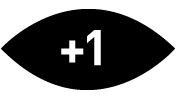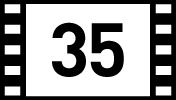

Back to the Future Part II is the exasperating second installment in an unintended and unwarranted trilogy. When the screenwriting team of Robert Zemeckis and Bob Gale (I Wanna Hold Your Hand, 1941, Used Cars) penned their wonderfully inventive time-travel comedy, the idea that it was the opening part of a larger story was a ridiculous notion. But when Back to the Future became the number one box-office hit of 1985, a sequel became all but inevitable.
This second movie picks up right where the original ended, with Marty McFly (Michael J. Fox), Doc Brown (Christopher Lloyd), and Marty's girlfriend Jennifer (Elisabeth Shue, replacing Claudia Wells) traveling from 1985 to 2015 because, as the Doc says, "something has got to be done about your kids!" This throwaway line at the end of the first film was a simple device that enabled a great final payoff—the DeLorean time machine car, now equipped with futuristic gravity-defying technology, taking flight and blasting off into the unknown future—a very satisfying ending. But having to write a sequel tied to that line hobbles this picture right out of the gate. Gale and Zemeckis never intended to explain why anyone would have to travel forward in time to "fix" something in the future, and they don't even attempt to justify the line that incites this story. How could they? Instead, they try to have fun recreating the fictional Hill Valley setting of the original movie as it might look in thirty years.
This envisioned future looks dated and chintzy. Even in 1989, the silly, absurdly busy, attention-grabbing vision of 2015 looked dated and nothing like "the future" (although many of the gadgets depicted anticipate actual technologies that came into use thirty years later). In an attempt to distract us from the fact that he has no story to tell, Zemeckis overloads every frame with lame visual jokes about how current trends and fashions might look if maintained for three decades. The only enjoyable exception to this noisy barrage of hyperactive Imagineering is the hoverboards—wheelless skateboards that float and glide above roads and sidewalks. The hoverboards enable Marty and the son of Back to the Future's main villain, Biff Tannen (Thomas F. Wilson), to reenact the previous film's skateboard chase sequence with the new spin of going airborne. But this potentially entertaining idea results in a sequence that is far less enjoyable than the one from the original movie. Much of what takes place on the physics-defying hoverboards looks artificial, and Wilson's performance as Griff Tannen is too cartoonish to take seriously.
The hoverboard chase is little more than a mildly heightened retread of the same sequence from Back to the Future, and that recycled feeling permeates most of Back to the Future Part II. The casting, the punch lines and sight gags, and the way each narrative beat plays out are all designed to remind the viewer of what we've seen before and remembered fondly. Watching everything happen again differently is supposed to be fun but is instead tedious. Another major issue is that in addition to Claudia Wells not reprising her role as Jennifer, Crispin Glover, one of the main stars of the original film and a key to its success, does not return to play Marty's father, George McFly. Rather than recast the Glover part with a different actor, as they did with Wells, Zemeckis and Gale write George out of the script as much as they can and attempt to conceal the fact that Glover is not playing the role in the scenes in which the character appears.
The stale and repetitive first act is made all the worse by Zemeckis's obsession with envelope-pushing visual effects. Riding high off the success of the previous year's Who Framed Roger Rabbit, the director seems far more interested in playing with technology than in telling a story. The 2015 scenes feature numerous twinning effects as the 1985 versions of characters come in contact with their future selves. Zemeckis triples down on this by having Fox not only play both the 1985 and 2015 versions of Marty, but also Marty's son and daughter. The preeminent effects house Industrial Light & Magic, also riding the success of Roger Rabbit, is employed here to develop and improve then-state-of-the-art techniques, like digital compositing and motion control, resulting in labored showcases that feel like work-in-progress demo reels rather than finished scenes. Many of these effects sequences are meant to be comical, but the limits of the technology and the need to obscure the fact that Glover is not participating straightjacket both the humor and our investment in anything beyond the feeling of, "Wow, how are they doing that very obvious effects shot?"
The movie improves a little when Marty returns to 1985 to discover Biff has altered the past to make himself rich and powerful. This middle section features the best of the rehashed narrative beats when the Marty from another time crosses paths with his mother Lorraine (the wonderful Lea Thompson, who makes the most of her various roles in this outing). But the overstuffed plot and the simplistic way Biff and many of the other characters behave prevent this middle section from taking off.
The picture would be a total failure were it not for its last third, in which Marty travels back to 1955 and must again attempt to reset the events of a past he accidentally altered without getting in the way of the previous version of himself who is trying to do the same thing. This third act is notable as the first instance of a filmmaker revisiting a beloved movie and showing us, with near-perfect detail, events we recall fondly from different angles and fresh perspectives. Three decades later, this idea would become old-hat as studios discovered the lucrative rewards of rebooting, recycling, and revisiting beloved cinematic properties from prior decades, and computer-generated imagery made it relatively easy for characters to revisit and interact with perfectly recreated settings, scenes, and even deceased actors from prior films. But at the time of Back to the Future Part 2, this was a novel concept that felt as clever as the original film's inspired premise. And, unlike the oppressive, half-baked visual effects of the first two sections, the twinning and other effects on display in the last third create actual movie magic. It is truly a joy to watch Michael J. Fox running through scenes we remember from the original film, and we begin to become as invested in Marty's efforts to correct the timeline as we were in the first movie. But the fun of the third act is not enough to save Back to the Future Part 2, which forces us to sit through far too much badly thought-out and poorly executed storytelling before we get to the good stuff at the end.
The film was shot back-to-back with its third installment, Back to the Future Part 3, which had pretty much wrapped production by the time Part 2 hit theaters. Thus, the clever and intriguing cliffhanger at the end of this film is followed by a quazi-trailer for the next movie, which reinforces the notion that this middle chapter is little more than an unpleasant but necessary slog we're obligated to sit through in order to get to the more enjoyable final chapter.
Zemeckis and Gale fail at justifying this unintended, lame sequel to their fantastic original film until the inspired third act, which, though it doesn't feel as groundbreaking now as it did 30 years ago, is pure movie magic.









